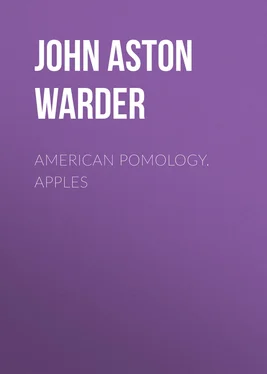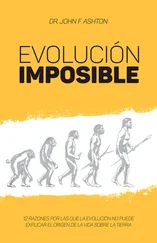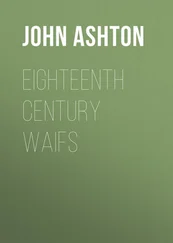John Aston Warder - American Pomology. Apples
Здесь есть возможность читать онлайн «John Aston Warder - American Pomology. Apples» — ознакомительный отрывок электронной книги совершенно бесплатно, а после прочтения отрывка купить полную версию. В некоторых случаях можно слушать аудио, скачать через торрент в формате fb2 и присутствует краткое содержание. Жанр: foreign_prose, Биология, foreign_edu, foreign_antique, на английском языке. Описание произведения, (предисловие) а так же отзывы посетителей доступны на портале библиотеки ЛибКат.
- Название:American Pomology. Apples
- Автор:
- Жанр:
- Год:неизвестен
- ISBN:нет данных
- Рейтинг книги:5 / 5. Голосов: 1
-
Избранное:Добавить в избранное
- Отзывы:
-
Ваша оценка:
- 100
- 1
- 2
- 3
- 4
- 5
American Pomology. Apples: краткое содержание, описание и аннотация
Предлагаем к чтению аннотацию, описание, краткое содержание или предисловие (зависит от того, что написал сам автор книги «American Pomology. Apples»). Если вы не нашли необходимую информацию о книге — напишите в комментариях, мы постараемся отыскать её.
American Pomology. Apples — читать онлайн ознакомительный отрывок
Ниже представлен текст книги, разбитый по страницам. Система сохранения места последней прочитанной страницы, позволяет с удобством читать онлайн бесплатно книгу «American Pomology. Apples», без необходимости каждый раз заново искать на чём Вы остановились. Поставьте закладку, и сможете в любой момент перейти на страницу, на которой закончили чтение.
Интервал:
Закладка:
The risk of transplanting large or old trees from the nursery, may be greatly diminished, and their value will be vastly enhanced, by judicious root pruning in the nursery-row. This may be done by digging, on either side, on alternate years, and cutting off the straggling roots, and particularly those that run deeply; this will be followed by the production of a multitude of fibrous roots that put the tree into a good condition for transplanting. In the great nurseries of the West, there is a peculiar plow, which is used for root pruning the nursery rows.
The Home Nursery has been recommended by Mr. Field in his Pear Culture as a means of enabling the orchardist to amuse himself, and to grow his trees in such style as he may prefer. He advises to select trees "of two or three years' growth, and prepare a piece of ground for the home nursery. For this a rich, deep, dry soil should be spaded and thoroughly pulverized to the depth of two feet, (trenched). In it plant the trees in rows four feet distant, and three feet apart in the rows. Two hundred trees would thus occupy a space fifty feet square. The roots having been carefully examined, and, as before mentioned, the laterals pruned to six or eight inches, are spread out horizontally, and gently covered with earth. It will be seen that the labor of pinching, pruning, and cultivating, will be much less on so small a spot, than when the cultivator is obliged to travel over three or four acres upon which they are ultimately to be planted.
"If at the end of two years it is still desirable to allow them to remain, a sharp spade should be thrust down around them, at a distance of fifteen or eighteen inches, in order to cut the long straggling roots, and thus induce the formation of fibres nearer home. This will fit them for transplanting at an advanced stage of growth. In this case, if at the end of two or three years, they are removed at the proper season, and with care, they will suffer scarcely any check. By pursuing this plan, they receive better care, grow faster, and are not liable to damage; and as only the good trees will, in this case, be set in the fruit grounds, none of those unseemly breaks in the rows, caused by the injury or death of a tree, need occur. Where, however, older trees, at least once transplanted, cannot be obtained, and it is desirable to set out the orchard at once, stout two-year old trees are decidedly preferable. Such trees have not stood sufficiently long to send their roots beyond a limit whence they can be removed; and with careful digging, removal and planting, the purchaser need not fear a loss of more than two per cent."
The Nursery Orchard, as practiced by A.R. Whitney, of Lee Co., Ill., now one of the largest orchardists of the country, is well worthy of imitation by all those nurserymen, who desire also to become fruit-growers. In laying off the blocks of nursery stock, the varieties that are wanted for the orchard, should be planted in such a manner, that they shall be in every fourth row, so that the orchard trees will stand in rows sixteen to twenty feet apart, according as the nursery-rows are four or five feet wide. In cultivating and trimming these rows in the nursery, a plant is selected, every twelve or sixteen feet, which is to remain as the orchard tree when the block shall be cleared. A good tree is selected, and special care in the pruning is bestowed upon it to secure the desired form, and low branches; if necessary, the tree on either side of it is removed, to give it room. By the time the block is cleared, these orchard trees are often in bearing, and while his customers are struggling to save their trees, and nursing them after their transplanting, the nurseryman will have become an orchardist, and is enjoying his fruits. The nursery will have become an orchard—one rather closely planted to be sure—but the trees can be dwarfed by root pruning with the plow, they shelter one another from the prairie blasts, and when too thick, alternate trees may be removed to the wood-pile, and thus cheer the owner on a winter's day.
Winter-killing is a serious evil in the nursery, as by it whole rows and blocks of certain varieties are sometimes destroyed, or very seriously injured. It has been observed to be most marked in its effects upon those sorts of trees that make the most vigorous and sappy growth, and those which continue to grow late in the season. Such varieties have very naturally acquired the epithet of tender especially as orchard trees of the same kinds, even in a bearing state, have been similarly affected; in some sections of the country, these kinds have been thrown out of cultivation. The bark looks shriveled and withered, the twigs seem dry when cut, and resist the knife; when thawed by the fire, or on the return of spring weather, the bark seems loose, and the inner bark, instead of being greenish-white, becomes brown, and the whole tree looks as though it was dead. In old trees, large portions of the bark start from the stem and large limbs, and hang loosely for awhile and then fall off. The buds alone retain their vitality, and upon the return of spring they sometimes succeed in establishing the necessary connection with the soil, and restore the circulation of the sap; the results are the deposit of the usual annular layer of woody matter, which encases the dead portions within, that become like a sequestrum of dead bone in an animal. The best treatment for the trees that have been winter-killed, is to cut them back very severely, in the hope of producing a vigorous wood-growth the next season, to repair the injury.
A partial winter-killing often affects small nursery trees, especially on low and wet, undrained soils; the plants recover, but for years they have a black point in the heart which embraces all of the wood-growth that was affected—all their wood at the period of the disaster. This is enclosed and surrounded by clear, healthy wood; but such trees are not desirable, they are so fragile, as to be easily broken.
The best preventive for winter-killing in the nursery, is to encourage early ripening of the wood, and to drain the land, is one of the best means of producing this effect; another is the cessation of culture at mid-summer, and the sowing of oats very thick at the last cultivation, has been practiced, and, it is thought, with excellent effects. The rank growth absorbs the superfluous moisture, robbing the trees, and afterwards forms a good protective mulch during the winter. The objections to it are, that it encourages the mice, which, by girdling the trees, effectually winter-kills them.
Many nursery and orchard trees often present a black discoloration of the bark, which is quite unsightly, and excites alarm for the health of the tree. This is often caused by trimming at unfavorable periods; in the spring pruning of bearing trees, the large stumps sometimes bleed, but in the nursery trees it arises from cutting them, and especially in the barbarous trimming up, during severely cold weather, when they are frozen.
Injurious Animals and Insects.—The nurseryman sometimes suffers from the depredations of some of the smaller animals, which cause him great annoyance. The mole, though highly recommended by the naturalists as a harmless beast, who is an aid to horticulture by his insectivorous habits, is nevertheless injurious in his ways ; for he often makes his run in the seed bed, or along a row of root grafts, and raising them from their stations break their tender rootlets, when the sun and air soon destroy them. Mice, of different kinds, are still more destructive, particularly in the winter, when they will often girdle young trees near the collar, and do much mischief. They also devour many seeds after they have been committed to the ground, particularly those sown in the autumn. For both of these animals, the best preventive is to catch them, which may be done with traps. They may also be poisoned. The young trees may be protected from the mice by keeping them clear of rubbish, that would shelter these animals, and when snow falls, it should be trodden down closely about the trees. Owls and cats will do their share in the destruction also, but they will also take the friendly little birds.
Читать дальшеИнтервал:
Закладка:
Похожие книги на «American Pomology. Apples»
Представляем Вашему вниманию похожие книги на «American Pomology. Apples» списком для выбора. Мы отобрали схожую по названию и смыслу литературу в надежде предоставить читателям больше вариантов отыскать новые, интересные, ещё непрочитанные произведения.
Обсуждение, отзывы о книге «American Pomology. Apples» и просто собственные мнения читателей. Оставьте ваши комментарии, напишите, что Вы думаете о произведении, его смысле или главных героях. Укажите что конкретно понравилось, а что нет, и почему Вы так считаете.












